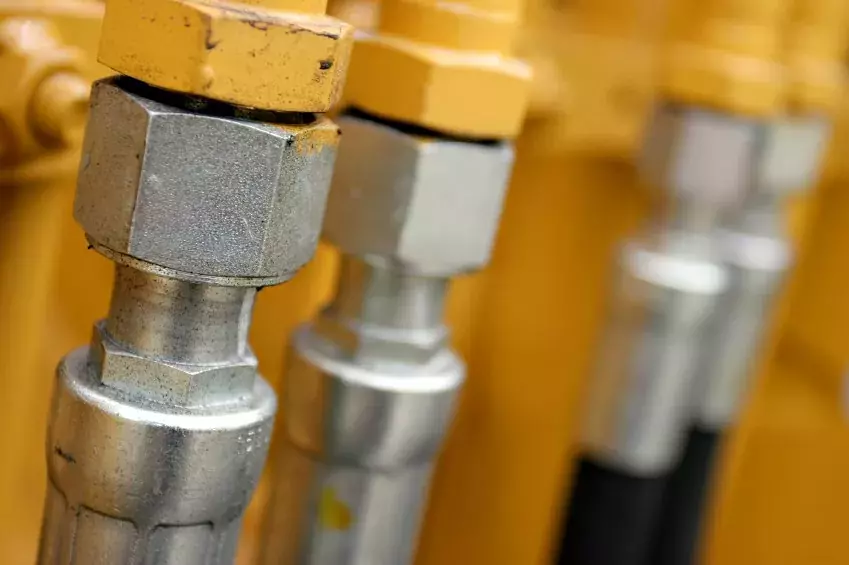 Hydraulic technology plays an integral role in modern engineering. Often referred to as “liquid power,” hydraulics is the science of using moving liquid to produce a desired effect. Airplanes, 18 wheelers, and a long list of heavy machinery use hydraulics to enhance functionality.
Hydraulic technology plays an integral role in modern engineering. Often referred to as “liquid power,” hydraulics is the science of using moving liquid to produce a desired effect. Airplanes, 18 wheelers, and a long list of heavy machinery use hydraulics to enhance functionality.
Hydraulic Forklifts
Hydraulic forklifts use hydraulic lifting to lower and raise extremely heavy loads. This involves hydraulic pistons, or cylinders that contain a liquid. Oil is usually the liquid of choice. As it becomes pressurized and depressurized, it contracts and expands. This reaction is the power source for the hydraulic forklift’s immense lifting capabilities. It takes several cylinders to lift the forks, especially for heavier objects.
Generally, hydraulic forklifts contain drive systems. The operator sits on or in the unit, and in some models, the driver must walk behind the truck. These designs feature a lever or hand yoke to control the hydraulics.
There are a number of hydraulic forklift models, and the maximum load weight can vary from one truck to another. But one commonality among most hydraulic lifts is the vertical lift system. This allows the forks to raise straight up.
Some designs offer a telescoping arm, which extends outward and upward from the machine’s body. This model is called a telehandler because it can lift items much higher and over farther distances than most vertical lifts.
Powering a Hydraulic Forklift
Like most forklift designs, there are several ways to power a hydraulic forklift. Electric-powered models carry batteries. These usually are smaller and have limited load capacities.
Larger lifts, though, might be gasoline powered. This produces more torque and energy. But the biggest, most capable lifts run on diesel fuel, which can produce even more torque and power.
If you are managing an outdoor project and you need a lift that can carry extremely heavy loads, consider renting or purchasing a diesel hydraulic forklift. Although if the truck is most likely operating indoors, a narrow, electric- or gas-powered truck might be more sufficient.
Maintaining the Forklift Hydraulics System
Even small problems can prevent a hydraulic forklift from functioning properly. But with the right knowledge of the parts within that system, you can prevent malfunctions from interrupting production.
Here are a few vital parts of the forklift hydraulic system along with information that can help you identify potential problems:
1. Control Valve
If the control valve isn’t working correctly, hydraulic pressure will be off, which can damage seals and inhibit lift capacity. If the control valve or seals are leaking, components can start to deteriorate quickly and the overall performance of your truck will decline.
2. Lift Cylinder
If the lift cylinder is leaking oil, problems with load drift can result. Also, lower fluid levels could cause wear to the hydraulic system. Leaks can happen inside or outside the cylinder. If you see hydraulic fluid on forklift parts or on the ground, the lift cylinder might be leaking.
3. Tilt Cylinder
If the tilt cylinder is leaking oil, the mast might start to move uncontrollably. Again, the lower fluid level could damage the hydraulics.
4. Auxiliary Lines and Hydraulic Hoses
If a forklift is missing tubes, lines, retainers or hoses, or if they’re damaged, interference and routing problems can result. Damaged or bent hose sheaves can cause oil leaks.
Particles entering the hydraulic oil can damage the hydraulic pump. Be sure to periodically check the hydraulic fluid reservoir for debris.
5. Hydraulic Filters
A blocked return filter or suction strainer restricts the flow of oil, enhances system pressure and causes wear to the system’s internal parts.
Routine maintenance and responsible handling are essential to prolonging the life of your forklift. This includes examining the hydraulic system for oil leaks or other problems.
